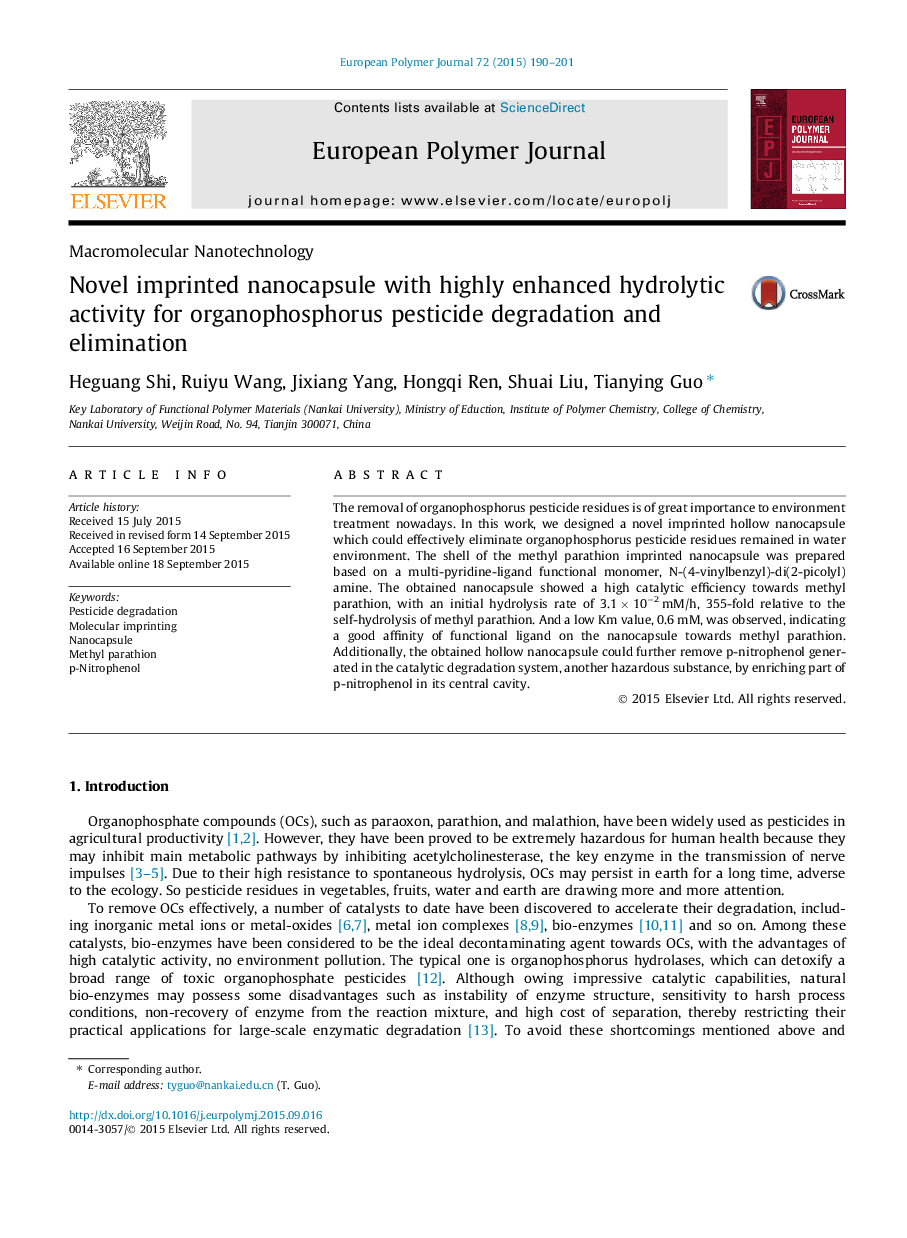| Article ID | Journal | Published Year | Pages | File Type |
|---|---|---|---|---|
| 1394713 | European Polymer Journal | 2015 | 12 Pages |
•Probed the affinity of novel monomer in degradation of organophosphorus pesticide.•Gotten nanocapsule with N-(4-vinylbenzyl)-di(2-picolyl) amine as functional monomer.•High catalytic activity for methyl parathion & enriching p-nitrophenol in central cavity.
The removal of organophosphorus pesticide residues is of great importance to environment treatment nowadays. In this work, we designed a novel imprinted hollow nanocapsule which could effectively eliminate organophosphorus pesticide residues remained in water environment. The shell of the methyl parathion imprinted nanocapsule was prepared based on a multi-pyridine-ligand functional monomer, N-(4-vinylbenzyl)-di(2-picolyl)amine. The obtained nanocapsule showed a high catalytic efficiency towards methyl parathion, with an initial hydrolysis rate of 3.1 × 10−2 mM/h, 355-fold relative to the self-hydrolysis of methyl parathion. And a low Km value, 0.6 mM, was observed, indicating a good affinity of functional ligand on the nanocapsule towards methyl parathion. Additionally, the obtained hollow nanocapsule could further remove p-nitrophenol generated in the catalytic degradation system, another hazardous substance, by enriching part of p-nitrophenol in its central cavity.
Graphical abstractFigure optionsDownload full-size imageDownload as PowerPoint slide
